Quick Links: About Us - Contact Us
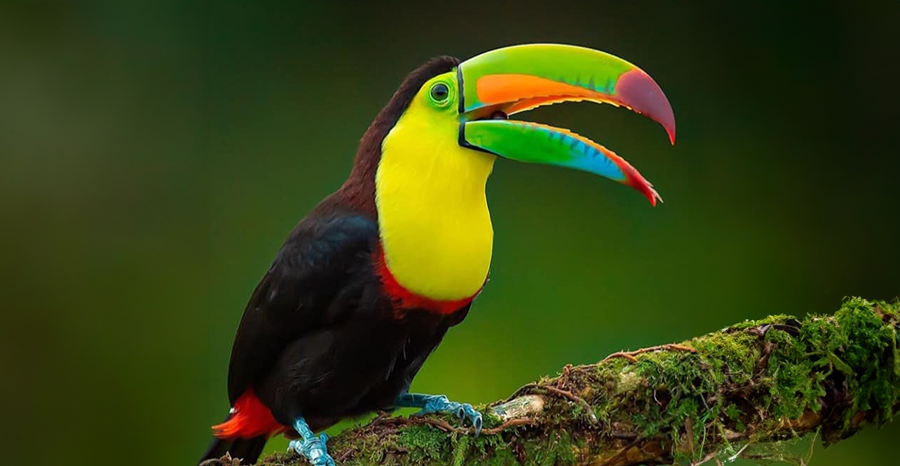
Among the lush tropical canopies and vibrant biodiversity of Belize, one bird stands out with unmistakable charm and kaleidoscopic beauty: The Keel-Billed Toucan. Affectionately dubbed the “bill bird” by locals, this striking avian serves not only as a visual delight but also as a potent symbol of national identity.
Belize declared its independence on September 21, 1981. On that historic day, the Keel-Billed Toucan was officially adopted as the national bird, a tribute endorsed by the Right Honorable George Price. With its flamboyant plumage and uniquely engineered beak, this bird embodies the vibrant spirit and ecological richness of Belize.
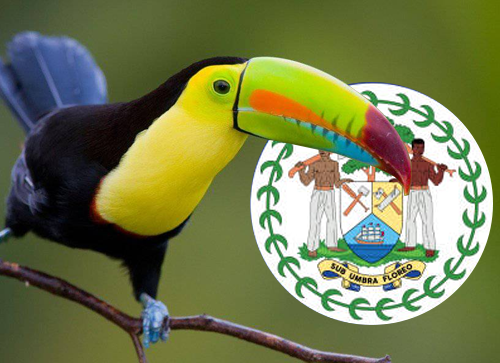
Scientific Classification
- Common Name: Keel-Billed Toucan
- Scientific Name: Ramphastos sulfuratus
- Kingdom: Animalia
- Phylum: Chordata
- Class: Aves
- Order: Piciformes
- Family: Ramphastidae
- Genus: Ramphastos (large beak)
- Species: Sulfuratus (yellow)
A Spectacle in Feathers: Physical Appearance
Few creatures in the natural world rival the visual spectacle of the Keel-Billed Toucan. This bird is a living canvas of colors, and its most defining feature, the oversized beak, is nothing short of a masterpiece.
Noteworthy Features:
- Beak: A brilliant blend of green, red, yellow, and orange. Despite its size, the beak is incredibly light, made from keratin, the same protein found in human hair and nails. Thin bone rods within the bill add strength without weight.
- Body: Primarily, black plumage provides a dramatic contrast to its yellow throat and chest.
- Eyes and Feet: The eyes are ringed with vibrant green skin, and the feet are zygodactyl, two toes forward, two backward, perfect for gripping branches.
Diet and Feeding Habits
The Keel-Billed Toucan is a resident of tropical and subtropical rainforests throughout Central and South America, with its range extending from Mexico to Venezuela. In Belize, these birds are commonly seen flitting through the forest canopy or perching in high treetops. Their presence in diverse habitats makes them excellent ambassadors for Belize’s commitment to biodiversity conservation.
Habitat and Distribution
Despite their seemingly cumbersome bills, Keel-Billed Toucans are agile foragers. Their diet is varied, showcasing their omnivorous nature.
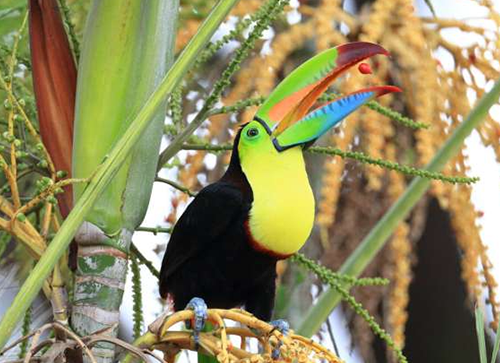
Typical Diet Includes:
- Fruits and berries
- Seeds and nuts
- Insects and invertebrates
- Small reptiles and amphibians
- Eggs and even young birds
The beak plays a pivotal role in accessing hard-to-reach fruits and defending their food from rivals.
Social Behavior: A Bird of Many Friends
Keel-billed toucans are inherently social creatures. Rarely spotted in solitude, they thrive in small flocks, typically comprising 6 to 12 members.
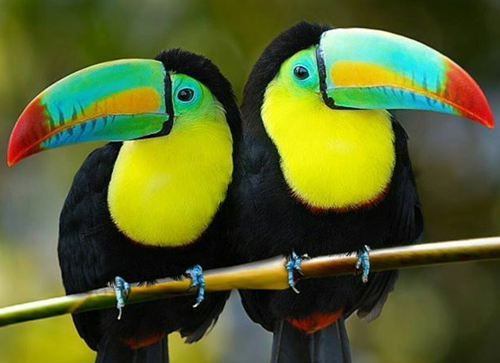
Group Dynamics:
- Engage in playful behavior, including aerial chases and bill wrestling
- Maintain complex vocal communications, a series of croaks, yelps, and whistles
- Use their vocalizations to establish territory and attract mates
- Often sleep communally, with up to six birds sharing a tree hollow
Their gregarious nature and cooperative behavior make them fascinating subjects for birdwatchers and researchers alike.
Mysterious Bill: Function Beyond Form
While the bill’s aesthetic appeal is undeniable, its functionality remains a topic of scientific intrigue.
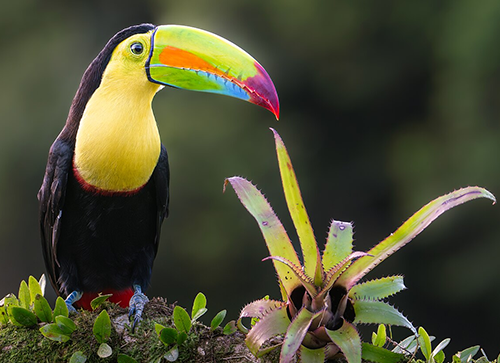
Possible Purposes of the Beak:
- Thermoregulation: Helps disperse body heat
- Courtship Displays: Likely used to attract mates through visual signaling
- Defense: Can be used to ward off predators or rivals
- Feeding Tool: Allows access to fruit deep within tree branches
Unlock Exclusive Tips, Offers, and Guides.
Subscribe now and be the first to access this limited-time offers.
Cultural Significance and Mythology
In various indigenous beliefs of Central and South America, the toucan occupies a mystical role. Some view it as a spirit animal, while others associate it with superstition. In specific communities, eating toucan meat is taboo for new fathers and is believed to bring misfortune to newborns.
Shamans and medicine men have been known to invoke the toucan’s image or spirit in ritualistic practices, using its form to transcend into the spiritual world. These cultural associations deepen the bird’s role in the heritage of the region, intertwining myth and ecology.
Flight and Movement: Grace in the Treetops
Despite their beauty, Keel-Billed Toucans are not adept fliers. Their flight is more of a bounding glide, moving from tree to tree with a combination of short flaps and hopping.
This characteristic makes them more dependent on dense, unfragmented forests, a fact that underscores the importance of habitat preservation.
Conservation Status and Challenges
According to the International Union for Conservation of Nature (IUCN), the Keel-Billed Toucan is currently classified as a species of Least Concern. However, that status does not imply immunity from threats.
Major Threats:
- Deforestation and loss of habitat due to agriculture and urbanization
- Illegal wildlife trade and poaching
- Climate change disrupting ecosystems
Belize’s efforts toward sustainable environmental stewardship are essential to preserving this bird’s natural habitat for future generations.
A Living Symbol of Belize’s Natural Legacy
The Keel-Billed Toucan is far more than just the face of Belize’s national symbolism; it is a beacon of ecological richness, cultural depth, and environmental responsibility. It reminds Belizeans and visitors alike of the need to protect and cherish the country’s natural heritage.
So, whether you’re an avid birder, a casual hiker, or simply someone who admires the wonders of the natural world, the opportunity to witness this resplendent bird in the wild is truly a moment to treasure.


